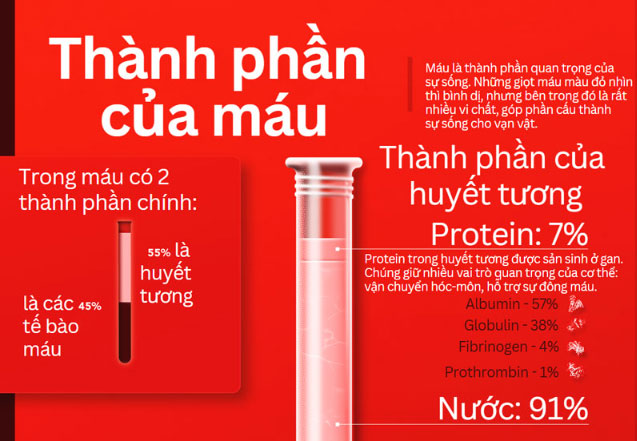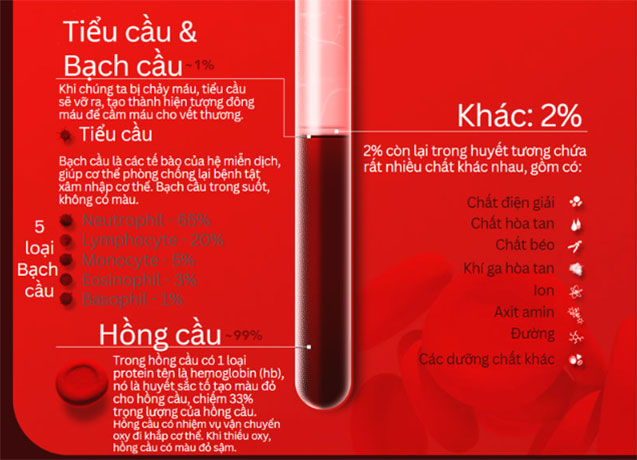Blood is a vital component of life, existing in the body as a liquid tissue, circulating throughout the body via veins and arteries. So, what components are found in a drop of blood?
Inside blood droplets are numerous micronutrients and cells that contribute to the essence of life for all living beings. Specifically, each drop of blood consists of about 55% plasma; the remaining 45% comprises blood cells, including white blood cells, red blood cells, and platelets.


How much blood is present in the body of a normal person?
The amount of blood in a human body is relatively stable due to the regulatory mechanism between blood produced in the bone marrow and blood lost daily. Depending on factors such as age, gender, and weight, the amount of blood in each person varies, averaging about 70 – 80 ml of blood per kg of body weight.
Dr. Daniel Landau, a hematology and oncology expert at the Florida Cancer Center (USA), states that the average adult has about 4.5-5.5 liters of blood circulating in their body, while the average human body, if all the blood were drawn out, could yield approximately 3.78 liters.
The amount of blood in a 5 or 6-year-old child is equivalent to that of an adult. However, because children are smaller and their bones, muscles, and organs weigh less than those of adults, their blood constitutes a larger proportion of their body weight compared to adults.
However, newborns contain very little blood. The blood volume in a newborn baby weighing 2.3-3.6 kg is only about 1 cup (0.2 liters).

















































